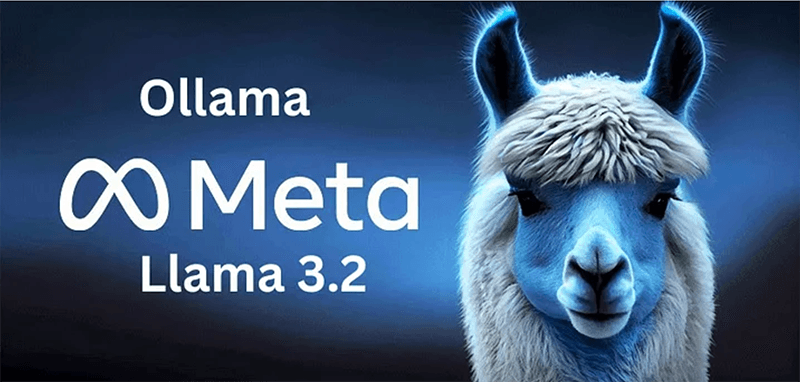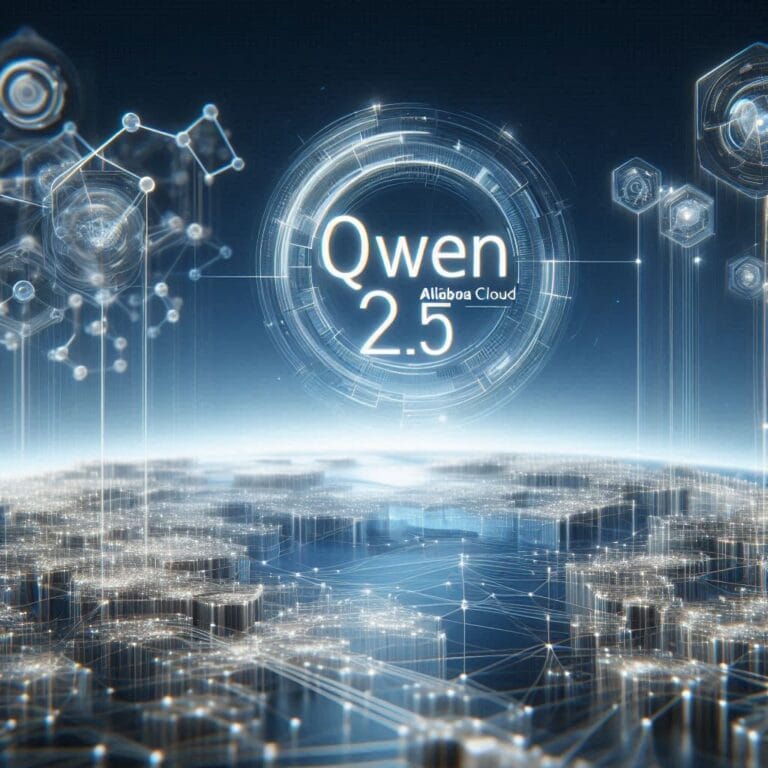The landscape of artificial intelligence is becoming more competitive with each release, and Meta’s latest model, Llama 3.2, is raising the bar. Featuring powerful multimodal capabilities, extended context length, and mobile optimization, Llama 3.2 positions itself as a versatile and accessible model for both developers and businesses. But how does it fare against competitors like ChatGPT-4 Turbo from OpenAI, Google’s Gemini Advanced, Claude 3 from Anthropic, and Microsoft’s Azure OpenAI offerings?
This blog will explore Llama 3.2’s unique features and compare it with these AI heavyweights to help you decide which one suits your needs best.
Llama 3.2: Multimodal Capabilities Take Center Stage
Llama 3.2 is Meta’s first multimodal model, capable of handling both text and image data. This gives it a distinct edge in industries that rely on visual reasoning—such as healthcare (medical imaging), e-commerce (visual product searches), and social media platforms (image content moderation). This is made possible through its integrated image encoders, which enhance tasks like image captioning and document-level understanding.
How It Stands Out: The model can not only answer questions about images but also edit them using natural language commands, a leap that positions Llama 3.2 as a top-tier choice for interactive visual tasks.

Extended Context Length: Llama 3.2’s Answer to Long-form Tasks
Another key feature of Llama 3.2 is its extended context length of 128K tokens, which significantly exceeds what most models can handle. This is particularly beneficial for tasks that require processing large documents, lengthy conversations, or complex code analysis.
Competitor Comparison: While OpenAI’s GPT-4 Turbo also supports 128K tokens in some implementations, making it comparable in this area, other models like Claude 3 and Google’s Gemini Advanced don’t yet offer this level of context capacity. For tasks like legal document analysis or scientific paper summarization, Llama 3.2 becomes an essential tool.
Mobile and Edge Device Optimisation: Taking AI Anywhere
Llama 3.2 introduces lightweight models with 1B and 3B parameters, optimized to run efficiently on mobile devices and edge platforms. This allows for on-device AI processing, reducing latency and improving privacy by eliminating the need for cloud-based services.
Why It Matters: Mobile optimization is critical in sectors like telemedicine, where real-time, on-device AI can assist without internet dependency. Unlike Google Gemini Advanced, which is more cloud-centric, and Microsoft’s Azure OpenAI, which depends on cloud infrastructure, Llama 3.2 offers more flexibility for edge deployments.

Llama 3.2 vs. ChatGPT-4 Turbo
Released alongside GPT-4, ChatGPT-4 Turbo offers several improvements, including faster response times and lower costs. Both models now support 128K tokens, but Turbo’s strength lies in its efficiency and conversational capabilities.
However, where Llama 3.2 gains an advantage is in multimodal reasoning and open-source accessibility. While ChatGPT-4 Turbo is primarily offered through OpenAI’s platform with limited customization, Llama 3.2 is fully open-source, allowing developers to fine-tune models for specific applications using Torchtune or Torchchat.
Strengths of ChatGPT-4 Turbo:
- Faster for high-volume applications.
- More accessible to everyday users via the ChatGPT Plus subscription.
Llama 3.2’s Advantages:
- Offers vision-based tasks, which ChatGPT-4 Turbo still lacks.
- Easier to customize and integrate into various platforms due to its open-source nature.
Llama 3.2 vs. Google Gemini Advanced
Google’s Gemini Advanced entered the market as a multimodal AI, offering sophisticated capabilities for both text and visual data. Gemini excels in multilingual tasks, code generation, and seamless integration with Google Cloud services.
However, Llama 3.2 offers a more developer-friendly model, thanks to its open-source nature, which is particularly beneficial for companies looking to fine-tune models for specific tasks without being locked into a proprietary ecosystem.
Key Differences:
- Multilingual Proficiency: Gemini Advanced performs better with multilingual processing, making it ideal for global enterprises.
- Customisation: Llama 3.2’s open-source flexibility allows developers to modify the model more freely, whereas Gemini Advanced is primarily integrated with Google’s suite of cloud services.
Llama 3.2 vs. Anthropic Claude 3.5
When comparing Meta’s Llama 3.2 and Anthropic’s Claude 3.5 Sonnet, each model brings distinct advantages to the table.
Llama 3.2 excels in multimodal capabilities, handling both text and image processing. This makes it ideal for tasks that combine visual and textual reasoning, such as image captioning and document processing. Its mobile and edge computing optimization adds to its versatility, allowing seamless deployment in low-latency environments.
On the other hand, Claude 3.5 Sonnet is designed for ethical conversational AI, with a focus on safe, aligned responses. It excels in complex dialogues where context understanding and bias prevention are crucial, making it highly valuable for sensitive fields like healthcare and law.
Key Differences:
- Llama 3.2: Multimodal (Text + Image), optimized for mobile use, open-source for customization.
- Claude 3.5 Sonnet: Conversationally focused, emphasizes ethical and safe responses, suitable for industries requiring alignment and sensitivity.
Microsoft Azure OpenAI: Enterprise Integration and Cloud Focus
Microsoft’s Azure OpenAI service provides GPT-4 access directly within the Azure ecosystem, combining powerful text generation capabilities with Microsoft’s vast enterprise tools. Azure OpenAI is known for its strong developer integrations, with access to services like Power BI, Azure Cognitive Services, and Azure Machine Learning. It excels in industries where integration into an enterprise workflow is crucial.
However, Azure OpenAI remains heavily cloud-centric, with less focus on on-device capabilities compared to Llama 3.2. The reliance on cloud infrastructure can introduce latency issues in scenarios where local, real-time decision-making is essential.
Where Llama 3.2 Wins:
- Llama 3.2 offers edge computing solutions, allowing for on-device AI that reduces reliance on the cloud, making it better suited for industries like telecom and manufacturing.
Azure OpenAI’s Strengths:
- Seamless integration with Microsoft’s suite of business tools, enabling organizations to rapidly deploy AI capabilities within existing workflows.
Fine-Tuning and Open-Source Customisation
One of Llama 3.2’s biggest advantages is its open-source flexibility. Developers have full control to fine-tune the model according to their specific needs using Torchtune and other open-source tools. This gives Llama 3.2 a unique edge in terms of customizability, particularly for niche applications in specialized industries such as legal tech or biotechnology.
Conversely, models like Google Gemini Advanced, Claude 3, and Azure OpenAI tend to operate in more closed ecosystems, making it harder for developers to make extensive modifications without relying on cloud infrastructure or pre-set parameters.
Conclusion: The Future of Multimodal AI
Llama 3.2 brings a potent combination of multimodal AI, mobile optimization, and open-source customization that makes it an attractive option for developers and businesses across industries. While competitors like ChatGPT-4 Turbo, Google Gemini Advanced, Claude 3, and Microsoft Azure OpenAI all bring unique strengths to the table—whether it’s cost-efficiency, multilingual processing, or enterprise integration—Llama 3.2’s blend of versatility and on-device AI capabilities sets it apart in several key areas.
References
- Meta – Llama 3.2: Revolutionising edge AI and vision with open, customisable models
- OpenAI – ChatGPT-4 Turbo
- Google – Gemini
- Anthropic – Claude 3.5





It’s a shame you don’t have a donate button! I’d definitely
donate to this outstanding blog! I suppose for noow i’ll settle for
book-marking and adding your RSS feed too myy Googe
account. I look forward to new updates and will share this blog with my
Facebook group. Tallk soon!
It’s a shame you don’t have a donate button! I’d definitely donate
to this outstanding blog! I suppose for now i’ll settle
for book-marking and adding your RSS feed to my Google account.
I look forward to new updates and will share this blog with my Facebook group.
Tallk soon!
Hello.
Good cheer to all on this beautiful day!!!!!
Good luck 🙂
Yes, really. I agree with told all above.
I confirm. I agree with told all above.
I apologise, but I need absolutely another. Who else, what can prompt?